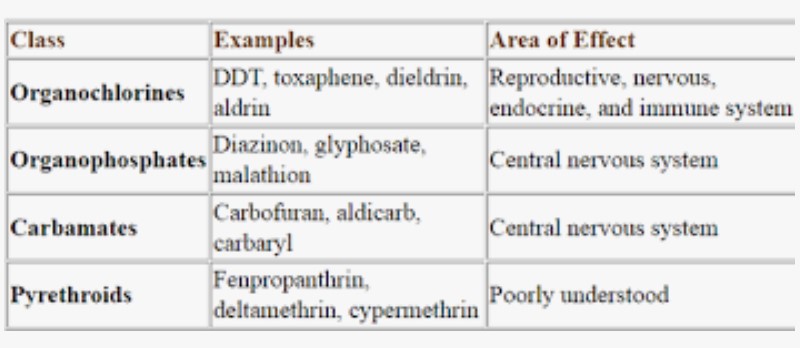
The use of synthetic pesticides in the US began in the 1930s and became widespread after World War II. By 1950, pesticide was found to increase farm yield far beyond pre-World War II levels. Farmers depend heavily on synthetic pesticides to control insects in their crops. Today, it is one of the most commonly used methods in controlling insects.
In 1997, US pesticide purchase accounted for nearly one-third of the world market. Annual pesticide expenditure totaled approximately $11.9 billion. Two-thirds of pesticide purchased is used in agriculture.
The use of synthetic pesticides in agriculture comes with a cost for the environment, and the health of animals and humans.
Danger of synthetic pesticide
The synthetic pesticide DDT was widely used in urban aerial sprays to control urban mosquito, gypsy moth, Japanese beetle and other insects in the 1940’s. By 1972, DDT was banned from the United States due to widespread development of resistance to DDT and evidence that DDT use was increasing preterm births and also harming the environment. DDT was found to cause behavioral anomalies and eggshell thinning in populations of bald eagles and peregrine falcons. Although DDT is banned in the US and many other countries, DDT continues to be manufactured and applied in underdeveloped nations where some of the US food supply is grown.
Dursban, one of the most common pesticide used in households, schools, hospitals and agriculture was banned in 2000 by the USEPA due to unacceptable health risk, especially to children. Toxicology studies have found that exposures to Dursban early in life may affect the function of the nervous system later in life, with possilbe links to changes in normal learning and behavior. Yet, six manufacturers in the US are allowed to continue making the chemical for use on foreign crops.
Types of synthetic pesticide
There are many classes of synthetic pesticides. The main classes consist of organochlorines, organophosphates, carbamates, and pyrethroids. Exposure to pesticides can cause acute (short term) or chronic (long term) effects on animals and humans, especially in the reproductive, endocrine, and central nervous systems.
| Class | Examples | Area of Effect |
| Organochlorines | DDT, toxaphene, dieldrin, aldrin | Reproductive, nervous, endocrine, and immune system |
| Organophosphates | Diazinon, glyphosate, malathion | Central nervous system |
| Carbamates | Carbofuran, aldicarb, carbaryl | Central nervous system |
| Pyrethroids | Fenpropanthrin, deltamethrin, cypermethrin | Poorly understood |
Today, there are more than 500 species of insects and mites that are resistant to some form of pesticides. As a result of the increasing resistance, countries have started to apply more products, combine pesticides, increase applications, or substitute with more toxic replacements.
Human Harm
There are three types of harmful effects caused by pesticides: acute effects, delayed effects, and allergic effects.
Acute effects are injuries or illnesses that appear immediately after exposure. The effects are usually obvious and reversible if appropriate medical care is given right away.
Delayed effects are illnesses or injuries that do not appear immediately. these include cancer.
There are over 160 synthetic pesticides that are listed to be possible carcinogens. Many of these pesticides are still in use. The US EPA has classification systems that identify carcinogens. The European Union does not have any list available on carcinogenic pesticides.
Pesticides have been known to cause lymphoma, leukemia, breast cancer, asthma, and other immune system disorders.
Allergic effects are harmful effects that some but not all people develop in reaction to substances.
For direct import consult us: contact@rymaxglobal.com